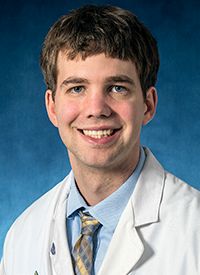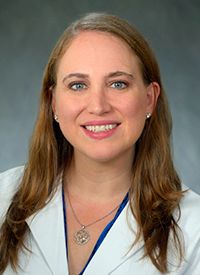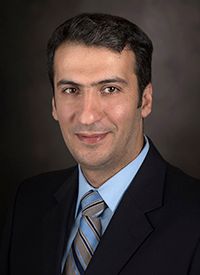Insider Insights: Unveiling Takeaways from AACR 2024
Experts from across the oncology field highlight their biggest takeaways and the hottest topics from the 2024 AACR Annual Meeting.
Scott Kopetz, MD, PhD

In case you missed the key sessions at the 2024 AACR Annual Meeting or want to know more about some of the trending topics highlighted during the conference, oncology experts from across the field shared their most notable takeaways during interviews with OncLive®.
Colorectal Cancer (CRC)
Scott Kopetz, MD, PhD, The University of Texas MD Anderson Cancer Center: I’ve been impressed by the great advances being made with novel therapies [in colorectal cancer (CRC)]. We saw disclosure of a number of important inhibitors—especially in the field of KRAS-targeting [agents]. We recognize that [inhibiting] KRASG12C is only the tip of the iceberg of what’s the table. Other [KRAS] mutations, such as G12D and G12V, are much more common in CRC, as well as other mutations, and these may be able to be addressed with some of these new inhibitors. We’re learning a lot from the [trials of KRAS] G12C [inhibitors], and we hope that this work will be able to accelerate the development and approvals of future inhibitors in this space.
Eric S. Christenson, MD

Eric S. Christenson, MD, Johns Hopkins School of Medicine: There is a lot of optimism that there are a lot of great targets, both from the perspectives of immune therapy and targeted therapy, which we also expanded on [in my presentation on data from a phase 1/2a trial (NCT03711058) of copanlisib (Aliqopa) plus nivolumab (Opdivo) in microsatellite stable CRC] and with different antibody-drug conjugates [ADCs]. There is a lot of hope that we’ll be making huge breakthroughs in the near future, which we desperately need.
Novel Technologies
Katharina Hoebel, MD, PhD, Dana-Farber Cancer Institute: I was encouraged by the plenary session [Monday] morning [on profiling tumor ecosystems in native tissue context], which was all about spatial interactions. There’s so much more that we can explore, so I’m looking forward to diving deeper into [this area].
Pasi A. Jänne, MD, PhD

Pasi A. Jänne, MD, PhD, Dana-Farber Cancer Institute: There were a lot of artificial intelligence talks and discussions on spatial understanding of tumors, which are interesting. Both of [those topics] reflect increased use of technology to understand the complexity of cancer and, ultimately, the complexity of cancer treatment. It’s nice to see those fields beginning to intersect, and hopefully [these tools] will be helpful for patients at the end of the day.
Kara N. Maxwell, MD, PhD

Kara N. Maxwell, MD, PhD, Perelman School of Medicine, University of Pennsylvania: One theme of this meeting has [had to do with] spatial technologies. [By] looking at tumors under these new technologies, you can incorporate the histological features, spatial features, and transcriptomic features, and move that through the whole continuum. There is [increased] focus on analyzing human datasets in order to understand the biology of cancer and, for a geneticist like me, in the early prevention or [intervention] space. These technologies moving into that space is exciting, and I’m hopeful that, from the advances we’ve seen in bioinformatics approaches, we’re going to be able to apply this [information] to our genetic carriers to [better] understand how cancer develops in these individuals.
Melanoma and Skin Cancer
Michael R. Migden, MD

Michael R. Migden, MD, The University of Texas MD Anderson Cancer Center: In my session [on novel immunotherapy strategies], adjoining my presentation [on the phase 1b/2 ARTACUS trial (NCT04349436) of RP1 in patients with advanced non-melanoma cutaneous malignancies who underwent prior solid organ transplant] was the use of talimogene laherparepvec [TVEC] for [patients with] lower-risk cutaneous squamous cell carcinoma [(CSCC) in a phase 2 trial (NCT03714828). This patient population] is very much in need of effective treatments [and can include] well-differentiated, keratoacanthoma-type CSCC.
For certain subsets of [patients with] skin cancer, [their disease] can be a challenge to manage surgically. If you try to remove these frequent formation lesions, particularly on the limbs and lower extremities, it can be a nightmare scenario where it’s difficult surgically to keep up with the number of new lesions forming. The fact that this [trial] was showing responses in these patients with lower-risk, well-differentiated CSCC in a setting where it is difficult to treat with a surgical modality is fabulous, and I will think about that when it comes to [the use of] oncolytic viruses in my own practice for patients with such conditions.
Head and Neck Cancer
Jameel Muzaffar, MD, Duke Cancer Institute: AACR is a prestigious conference, and the amount of science that is presented is immense. It’s all [ground]breaking or cutting edge. The head and neck [cancer] population is not represented here a whole lot, but I have seen a lot of microbiome-based studies, and those are encouraging. Within the patient population I treat—head and neck squamous cell carcinoma—we know that the oral microbes that are present in our mouth have a role in inflammation and the possible development of this cancer, so microbiome-based studies are an area that we need to look at for our patients.
Haeseong Park, MD, MPH

Gastrointestinal Cancer
Haeseong Park, MD, MPH, Dana-Farber Cancer Institute: As a gastrointestinal oncologist, what's exciting is to see all the development of new targeted therapies, such as RAS inhibitors, that are coming up. I’m also impressed to see a lot of clinical and translational work that is ready to be [examined further] in clinical trials.
Gynecologic Oncology
Rebecca Porter, MD, PhD

Rebecca Porter, MD, PhD, Dana-Farber Cancer Institute: I enjoy AACR because there are a lot of scientific abstracts presented, and I’ve enjoyed some of the science that has been presented on trying to understand the interplay between the innate immune response and the adaptive immune response, looking between myeloid cells and T cells, and that will be informative when we try to understand [approaches] combining ADCs and immunotherapy [in endometrial cancer].
Genitourinary Cancer
Samer A. Srour, MB ChB, MS

Samer A. Srour, MB ChB, MS, The University of Texas MD Anderson Cancer Center: At AACR, it’s hard to put the amount of knowledge that we gain every year [into words]. In addition to other cell therapy clinical trials [in genitourinary cancers] that we saw in this meeting, we have seen a lot of our other new products, such as bispecific antibodies and some other immune-mediated therapies, which all have one purpose: to make cancer history. There has been a collection of several preclinical and clinical studies that I saw at this AACR [Annual Meeting], and I encourage the audience to look at these.
Clinical Trial Design and Treatment Sequencing
Jeffrey Townsend, PhD

Jeffrey Townsend, PhD, Yale School of Public Health: I saw an interesting presentation on evolutionary theory and how it applies to clinical trial design. A number of the ideas, which are maybe not unique to evolutionary theory but certainly are informed by evolutionary theory, were important. One idea is that we need to look at the care goals we have in performing clinical trials, and we need to perform clinical trials for all of those care goals. For instance, we often look for what a therapy will do in the next 6 months or 1 year, because that’s the time scale on which we do follow-up, or maybe it’s 2 or 3 years, depending on the treatment. However, [patients] often end up switching to another therapy, and as we get more and more therapies, it’s getting more and more complicated to [sequence] those therapies.
One of the things we need to think about is the whole course of a patient’s journey and where [sequencing] matters. In a talk I gave during an educational session, I showed how we can observe mutations that are caused by cisplatin and how that can cause an EGFR T790M mutation, which was the resistance mutation that [helped lead] to erlotinib [Tarceva]—an otherwise very useful drug for lung cancer—[not being used anymore]. Therefore, understanding how 1 therapy impacts another is increasingly important, and that’s something we’re going to have to focus on.



